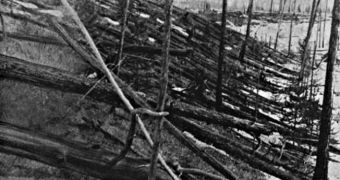Some 102 years ago, a devastating cataclysm razed a huge swath of Siberian forest. Known as the Tunguska explosion, the event was established to have been most likely produced by a space impactor blowing up above the area. It is estimated that the extraterrestrial object had a mass of about 50,000 metric tons and that its destruction released a force equal to several atomic bombs going off at the same time, Wired reports.
While investigating ice cores collected from Greenland, researchers working for a new study discovered spikes of ammonium in the layers corresponding to the beginning of the last ice, which means that a cometary impact may have taken place at the time. The impactor appears to have produced only final spike of cold temperatures, before the weather finally warmed up around the world. The team behind the recent investigation says that the readings collected from Greenland are extremely similar in their characteristics to the ones that were recovered from Siberia following the Tunguska event. This hints that the space rock did not impact the ground, but actually exploded over it.
“There’s a remarkable peak of ammonium ions in ice cores from Greenland at the beginning of the Younger Dryas. [This represents] a compelling argument that a major extraterrestrial impact occurred then,” says University of Maine in Orono glaciologist Paul Mayewski, an expert that was not a part of the research. Details of the study appear in the April issue of the respected scientific journal Geology. The layer where the ammonium spikes were identified dates back to some 12,900 years ago. The Younger Dryas stadial stretched between 12,800 and 11,500 years ago.
Researchers say that the object which made its way in Earth's atmosphere millenia ago may have been an icy comet. In the case of the Tunguska event, when an asteroid approached the ground, air friction at about 100,000 degrees Celsius split the nitrogen in the air and formed nitrates with the oxygen around. In the case of the older event, ammonium concentrations seem to indicate that the body may have contained water. The only celestial bodies capable of doing this are icy comets, the team says.

 14 DAY TRIAL //
14 DAY TRIAL //